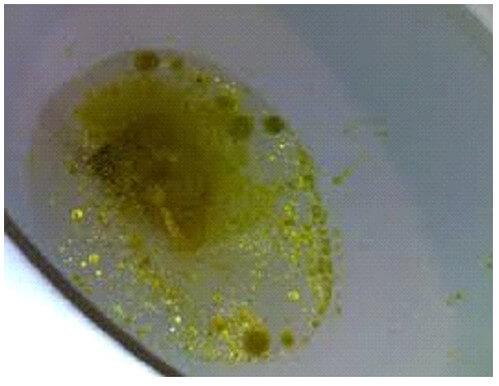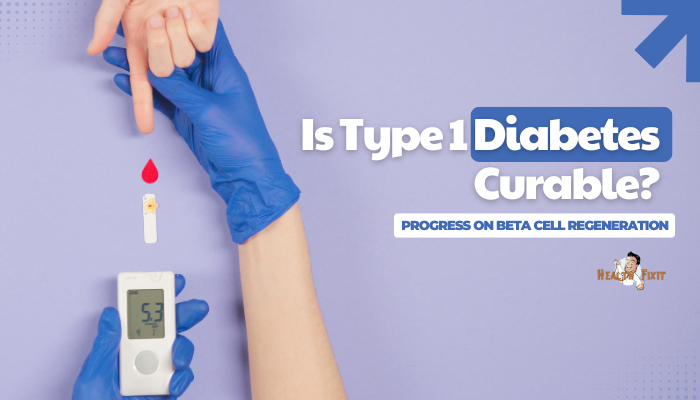What is Steatorrhea ?
Definition : Steatorrhea is not a disorder but a symptom that fecal matter is frothy with a foul smell because of high-fat content.
Typically, medics use this term to refer to loose fat in stool and are often pronounced as “stē′ətərē′ə,” from two Greek words “stear” and “rhoia” for fat and flow respectively.
When human intestines cannot satisfactorily absorb the fats, the body will only eliminate them from the stool (2,3). In fact, Steatorrhea ranked as the third leading cause of chronic diarrhea.

Steatorrhea Picture
Causes of Steatorrhea
Being a symptom of a problem in the absorption of fats in the intestines, this condition can be caused by both digestive and absorptive disorders in the body. Generally, the underlying causes of Steatorrhea are malabsorption of fats in the intestines, common diseases that affect the liver and the pancreas, food, and drugs.
When there aren’t enough bile acids in the body due to liver damage or removal of the pancreas, fat absorption is hampered. In fact, any digestive disorder is bound to affect production and release of the essential enzymes that aid in the digestion of fats in the intestines. A fat maldigestion and malabsorption will eventually result in increased fats in the feces (1,2,3).
Some of the most common causes of Steatorrhea include the following :
- Biological causes: Possible biological causes can be lack of bile acids, defects in pancreatic enzymes, defective mucosal cells, etc.
- Intestinal stasis is another cause of Steatorrhea especially when peristalsis does not quickly and appropriately move the food substances in the intestines. Bacterial overgrowth will eventually be evident, resulting in Steatorrhea.
- ZES (Zollinger-Ellison Syndrome) – ZES is responsible for excessive production of acids in the stomach. Excess acid, in turn, deactivates enzymes which act on fats.
Short bowel syndrome mostly occurs when the first part of the intestine, the ileum is removed. Additionally, when a large portion of the intestine is not serving its purpose to the maximum, incomplete absorption of fats will probably be evident. Chemotherapy, Crohn’s disease, and radiation are some of the main causes of this disorder. - Common liver diseases that include hepatitis, cirrhosis, and inflammation of the liver. Any condition that inhibits the normal working of the liver is likely to trigger Steatorrhea. (3,4)
Signs and Symptoms of Steatorrhea
Being a less frequent but deadly disorder, Steatorrhea is typically suspected when someone has a large smelly stool that’s greasy floating on the toilet. Noticing that you are probably suffering from this disease is quite easy because of the following noticeable signs (3).
- Pale but bulky stool
- Smelly stool
- Quick weight loss in months
- Jaundice – yellow skin and white eyes
- Pruritus
- Loose stool
- Greasy Stool
- Distension of abdomen
- Nausea
- Abdominal pain
- Flatulence and rumbling noise in the stomach
- Presence of diarrhea
Categories of Steatorrhea
It has been known that Steatorrhea comes in three broad categories with evidence suggesting the same result.
- Pancreatic insufficiency steatorrhea
The most common Steatorrhea is the pancreatic insufficiency steatorrhea that arises due to insufficient enzymes in the body. A little supply of lipase and colipase to allow for normal lipid hydrolysis or exocrine pancreatic insufficiency eventually causes pancreatic insufficiency steatorrhea (4). - Bile salt deficiency
Another category of Steatorrhea is due to Bile salt deficiency as a result of impaired release of bile salts. - Malabsorption steatorrhea
Finally, malabsorption steatorrhea is as a consequence of a disorder in the small intestine, surgery or medication.
Diseases associated with Steatorrhea
Following an attack by this condition, most patients are more likely to suffer from other accompanying illnesses. The most common diseases associated with steatorrhea include the following (2).
- Pancreatitis
- Inflammatory Bowel Disease
- Celiac disease
- Cystic fibrosis
- Exocrine pancreatic insufficiency
- Zollinger-Ellison syndrome
- Giardiasis
- Tropical sprue
- Graves’ disease or hyperthyroidism
Pancreatitis
In ordinary cases, a person can experience an inflammation of the pancreas because the enzymes produced by the pancreas are activated before release, thus attacking the pancreas. The condition is known as pancreatitis and can be acute or chronic, depending on the intensity of the attack.
When it’s acute pancreatitis, it will last for a few moments, leaving less severe effects in the body. In typical cases, acute pancreatitis is treatable although it can be life-threatening. The severe one precedes the acute one, typically after several attacks and can be fatal.
Pancreatic Steatorrhea
When there’s an absence of pancreatic juice from the intestines, pancreatic steatorrhea is bound to occur. It’s similar to steatorrhea as the feces are bulky, smelly, and pale-colored (5).
Celiac Disease
Celiac Disease is a gastrointestinal disorder, typically a disease of the small bowel and not of any other organ in the body. In young children, this condition causes stunted growth because of insufficient growth nutrients in the body. In adults, however, celiac disease may appear in latter stages of life with diarrhea, abnormal bloating, and stomach discomfort as the initial signs. The bacteria located in the large intestine will eat the fats, releasing intestinal gasses that are responsible for the bloating and flatulence.
It’s always vital to accurately diagnose the celiac disease before starting a gluten-free treatment because this method of treatment involves abstaining from lots of essential food components in the body.
Steatorrhea stool
In the medical world, a “fatty stool” that is floaty and bulky is referred to as Steatorrhea. Albeit it will appear frosty, smelly and pale colored, the only way to determine if it’s steatorrhea is after a careful and comprehensive laboratory testing. In mild cases, the stool will appear healthy with little or no noticeable signs and the patient might have lots of difficulties noticing the presence of this condition. However, in severe cases, the stool will appear completely insane (6).
The stool is always caused by maldigestion and malabsorption in the body although impaired digestion is another great cause.

Steatorrhea (fatty) stool Picture
Steatorrhea Diet
Since Steatorrhea is caused by incomplete absorption of fats in the intestines, combating this condition calls for the consumption of only low-fat diet. However, dietary treatment should only be applied when you are sure that you are suffering from Steatorrhea. Your doctor will prescribe that you only adopt a meal that contains 30% or less lipid count in the diet. Low-fat meals will eventually help off-load the pancreas with fat and the little enzymes produced used to the maximum.
Diagnosis of Steatorrhea
When diagnosing this condition, it generally takes a maximum of 72 hours analyzing the stool. It’s because the patient will be required to submit his or her stool of 100g per day for three consecutive days. If bad fat is higher than 14g each day, it will probably suggest that you are suffering from steatorrhea because of malabsorption and malabsorption (4). Three days of a collection will mean that the total mass will surpass 35g that will then require prompt treatment.
Treatment of Steatorrhea
Treatment of steatorrhea is mainly done through the correction of the cause. Digestive enzyme supplements also aid in treatment. Below are some of the methods used:
1. Limiting intake of fat
The first and always the primary treatment of steatorrhea is to reduce the number of fats in the diet. Since the stool has excess fat, your doctor will probably recommend a diet that includes little fats.
2. Reduction of alcohol intake
Where an alcohol condition is the cause of steatorrhea, a patient should prepare a plan to drastically reduce alcohol intake. Where possible, they can also totally stop drinking alcohol.
3. Pancreatic enzymes
Sometimes, reducing the amount of fats in the diet yields a little result in the body. Taking supplementary pancreatic enzymes together with your meals will then be applicable. It’s vital to note that they should only be taken with meals and not before or after the meals.
4. Use of antibiotics
When Steatorrhea is as a result of bacterial overgrowth in the intestines, the only way to counter the problem is by taking antibiotics.
5. Medium-Chain Triglycerides
When supplementary pancreatic enzymes fail to work, medium chain triglycerides are added into the diet as supplements. Although such cases are rare, they are excellent alternatives because they do not require any enzymes to be absorbed into the bloodstream.
6. Supplements of fat-soluble vitamins
When steatorrhea has been discovered with the patient suffering from chronic pancreatitis, vitamins A, D, E, and K will be increased in the diet.
7. Folic acid therapy
If patients suffer from Sprue, they respond well to folic acid therapy. They can eat foods that are rich in folic acid such as kale, asparagus, spinach and Broccoli.
Prevention of Steatorrhea
It has been proved that excessive intake of alcohol also causes steatorrhea. Since alcohol causes liver cirrhosis, the liver will be hampered from producing the essential enzymes necessary for digestion of fats in the body. Reduction and even complete cutback of alcohol will lessen the chances of suffering from this condition (6).
Another form of prevention dwells primarily on early detection of the condition. Regular clinical visits can be ideal for dealing with such conditions as if detected while it’s still manageable it can be treated.
Prevention of steatorrhea also incorporates having little fats in your diet. Since the condition results from incomplete digestion and incomplete absorption making the excess fats occur in the stool, you must consume low fats in your diet.
References
- Diagnose-me.com. Steatorrhea – Symptoms, Diagnosis, Treatment and Information [Internet]. 2015 [cited 10 December 2015]. Available from: http://www.diagnose-me.com/symptoms-of/steatorrhea.html
- What is Steatorrhea – Symptoms C. What is Steatorrhea – Symptoms, Causes and Treatment | i Health Blogger [Internet]. Ihealthblogger.com. 2015 [cited 10 December 2015]. Available from: http://www.ihealthblogger.com/2015/06/what-is-steatorrhea.html
- Wikipedia. Steatorrhea [Internet]. 2015 [cited 10 December 2015]. Available from: https://en.wikipedia.org/wiki/Steatorrhea
- [Internet]. 2015 [cited 10 December 2015]. Available from: 4. http://us.bestpractice.bmj.com/best-practice/monograph/770.html
- [Internet]. 2015 [cited 10 December 2015]. Available from: 5. http://medical-dictionary.thefreedictionary.com/pancreatic+steatorrhea
- Rightdiagnosis.com. Prevention of Steatorrhea – RightDiagnosis.com [Internet]. 2015 [cited 10 December 2015]. Available from: http://www.rightdiagnosis.com/s/steatorrhea/prevent.htm




